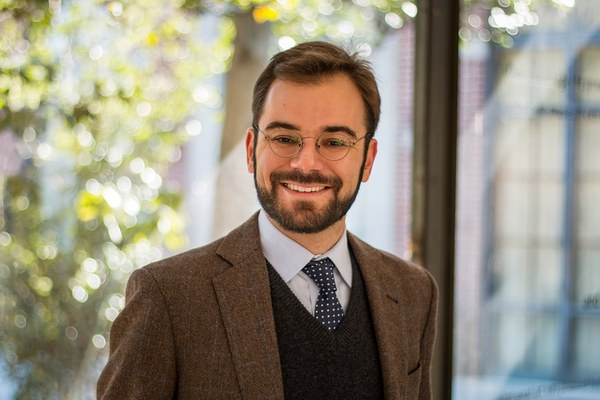Jake Ransohoff, a PhD candidate in history at Harvard University, is a Tyler fellow in Byzantine Studies at Dumbarton Oaks. His recent research report, “Blinding and the Politics of Mutilation in the Byzantine World,” investigated the uses, evolution, and reception of the gruesome punishment in Byzantium.
Q&A with Jake Ransohoff
You mentioned that blinding is an understudied phenomenon. Why hasn’t it been the focus of much academic attention?
Blinding as a punishment can seem strange and exotic to modern audiences, and I think this strangeness makes blinding particularly vulnerable to a kind of essentialism. I gave one example in my talk, when I discussed the view that Byzantine blinding had its origins in Persia. Scholars sometimes explain the rise of blinding by saying, “oh, Byzantine emperors borrowed it from the Persians.” This appeal to diffusion often substitutes for an analysis of how and why blinding worked in a Byzantine context—it needs no explanation, it was simply part of the DNA of the Near East. That sense is reinforced by blinding’s long Byzantine history. It’s easy to come away with the impression that blinding was something static and changeless—again, part of a timeless oriental world, bound by tradition. My project tries to reframe this phenomenon by asking new questions. Even if blinding came from Persia, what values and structures gave it meaning in Byzantine society? And how was the practice modified and adapted over its long history? There’s much more variation than most scholars have realized, and these changes tell us a lot about wider social and political trends in the Byzantine world.
Talk a bit about the public and private versions of this punishment, their different purposes and effects.
What my research has found is there’s a major change in the venues of high-status mutilation after the 8th century. In the later Roman empire, mutilation of elite enemies—rebel leaders, would-be usurpers, deposed emperors—was typically carried out in the open, in large public venues and in front of large crowds. By contrast, after the 8th century, the mutilation of political rivals began to be hidden away in prisons or remote monasteries, out of the public eye.
In part, I think, this shift is linked to social changes in the empire. Emperors tend to blind or mutilate people they can’t afford to kill. And that circle of people widens significantly between the 7th and 9th centuries, with the rise of a strong, stable aristocracy and more powerful church. This new political landscape imposed new constraints on imperial power. Emperors feared alienating powerful aristocrats or drawing censure from the church. Public punishment can also be a double-edged sword. It can delegitimize opponents in the eyes of the crowd, but its reception is hard to control. The image of the condemned man’s mutilated body can evoke sympathy and turn popular opinion against the ruler. Mutilating opponents in private was a way for emperors to insulate themselves from these risks. It gave the emperor plausible deniability, so to speak, if the punishment sparked condemnation or public outrage. Emperors could claim innocence, saying, “this was done without my approval,” distancing themselves from the unpopular act. It’s a response to changing dynamics of power.
One of the questions you received at your talk was about the blinding of a large number of soldiers, which you discussed as an aberrancy. What makes this event so strange?
The story itself, which may be apocryphal, is that 14,000 Bulgarian prisoners of war were blinded by the emperor Basil II in the year 1014 after a major battle. When the blinded soldiers returned to the Bulgarian capital, the Tsar was so shocked that he suffered a stroke or heart attack and died. Byzantinists have argued over whether Basil really mutilated 14,000 prisoners of war, which is a huge number. Some have said it’s entirely invention, others that it’s based on fact but the numbers are actually much smaller.
All of that’s debatable. The point is that Byzantine authors, like modern authors, emphasize this event as something out of the ordinary. The mutilation of captives or rebels is something that’s typically done to high status individuals. You often simply let common soldiers go. Sometimes there are mass executions, but usually they’re set free, or impressed into your own army. To systematically mutilate every captured soldier just wasn’t usually done. It may have been an act of calculated psychological warfare, and of course it was a practical move as well. The blinded Bulgarian soldiers would be physically unable to take up arms against Byzantium again. But this event stands out as a notable departure from the expected treatment of captured soldiers, which is how Byzantine sources themselves discuss the case.

